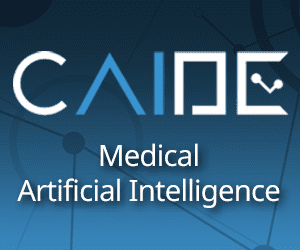The dilemma of balancing legacy systems with innovation is a significant challenge for CIOs in the semiconductor industry. Modernizing IT infrastructure while maintaining operational continuity and leveraging existing investments requires careful planning and strategy. Here’s a detailed examination of the CIO’s dilemma between legacy systems and innovation, along with strategies to navigate this complex landscape.
Understanding the Legacy Systems vs. Innovation Dilemma
1. Legacy Systems: Strengths and Limitations
Strengths:
- Proven Reliability: Legacy systems have a track record of reliability and stability in mission-critical operations.
- Significant Investment: Organizations may have invested heavily in legacy systems, making them valuable assets.
- Established Processes: These systems are often deeply integrated into existing workflows and processes, making them familiar to users.
Limitations:
- Outdated Technology: Legacy systems may lack the capabilities needed to support modern applications and technologies, such as AI and cloud computing.
- Integration Challenges: Integrating legacy systems with new technologies can be complex and costly, leading to potential compatibility issues.
- Maintenance Costs: Older systems can be expensive to maintain and upgrade, with limited vendor support and high costs for parts and expertise.
2. Innovation: Benefits and Risks
Benefits:
- Enhanced Capabilities: Innovative technologies, such as cloud computing, AI, and IoT, offer advanced capabilities that can drive efficiency, agility, and competitive advantage.
- Scalability and Flexibility: Modern technologies often provide scalability and flexibility, allowing organizations to adapt quickly to changing market demands and business needs.
- Improved Performance: Innovation can lead to better performance, increased automation, and more effective data management and analysis.
Risks:
- Implementation Costs: Adopting new technologies can be expensive, involving costs for software, hardware, and training.
- Disruption: Transitioning from legacy systems to new technologies can disrupt operations and require significant change management efforts.
- Skill Gaps: New technologies may require specialized skills and expertise that are not readily available within the organization.
Strategies for Balancing Legacy Systems with Innovation
1. Assess and Prioritize
Evaluate Legacy Systems:
- Criticality: Assess which legacy systems are critical to operations and which can be upgraded or replaced without significant disruption.
- Performance: Analyze the performance of legacy systems to determine if they meet current and future needs.
Define Innovation Goals:
- Business Objectives: Clearly define the objectives of innovation and how they align with the organization’s overall business goals.
- Technology Requirements: Identify the technologies and capabilities needed to achieve these goals.
2. Develop a Modernization Roadmap
Create a Phased Approach:
- Short-Term vs. Long-Term: Develop a roadmap that includes short-term improvements and long-term transformation goals. Prioritize projects based on their impact and feasibility.
- Pilot Programs: Start with pilot programs to test new technologies in a controlled environment before broader implementation.
Integration Planning:
- Hybrid Solutions: Consider hybrid solutions that integrate legacy systems with new technologies. This can help bridge the gap and facilitate a smoother transition.
- Middleware and APIs: Use middleware and APIs to enable communication between legacy systems and modern applications.
3. Focus on Change Management
Stakeholder Engagement:
- Communication: Communicate the benefits and impacts of modernization to stakeholders to gain buy-in and reduce resistance.
- Training and Support: Provide training and support to help employees adapt to new technologies and workflows.
Minimize Disruption:
- Incremental Changes: Implement changes incrementally to minimize disruption to ongoing operations.
- Contingency Planning: Develop contingency plans to address potential issues during the transition.
4. Leverage Modernization Tools and Techniques
Cloud Solutions:
- Migration: Consider migrating legacy systems to the cloud to enhance scalability and reduce maintenance costs.
- Cloud-Native Applications: Develop or adopt cloud-native applications that complement existing systems and provide additional capabilities.
Automation and AI:
- Automation: Implement automation tools to streamline processes and reduce the reliance on manual intervention.
- AI and Analytics: Use AI and advanced analytics to gain insights from data and drive decision-making.
5. Optimize Costs and Resources
Cost-Benefit Analysis:
- ROI: Perform a cost-benefit analysis to evaluate the return on investment (ROI) of modernization initiatives. This helps justify the investment and prioritize projects.
- Resource Allocation: Allocate resources efficiently to balance the maintenance of legacy systems with the development and implementation of new technologies.
Vendor and Partner Collaboration:
- Vendor Support: Work with vendors to support the transition from legacy systems to new technologies. This may include negotiating support contracts or seeking expertise for integration.
- Industry Partnerships: Collaborate with industry partners and consortia to stay informed about best practices and emerging technologies.
Case Studies and Examples
- Intel’s IT Modernization: Intel has undertaken significant IT modernization efforts, including migrating legacy systems to the cloud and adopting advanced analytics and AI. This has enabled the company to enhance performance, scalability, and agility.
- Samsung’s Digital Transformation: Samsung has successfully integrated new digital technologies with its existing systems to improve supply chain management and operational efficiency. The company uses hybrid solutions and APIs to bridge the gap between legacy and modern systems.
- IBM’s Approach to Legacy Systems: IBM has developed a strategy for modernizing legacy systems by leveraging cloud platforms and automation. This approach helps clients transition smoothly while maintaining the functionality of their existing systems.
Conclusion
Balancing legacy systems with innovation is a complex but essential task for CIOs in the semiconductor industry. By assessing and prioritizing systems, developing a modernization roadmap, focusing on change management, leveraging modern tools and techniques, and optimizing costs and resources, CIOs can navigate the challenges of IT modernization. This balanced approach enables organizations to harness the benefits of new technologies while preserving the value of existing investments, ultimately driving operational excellence and competitive advantage in the semiconductor industry.





